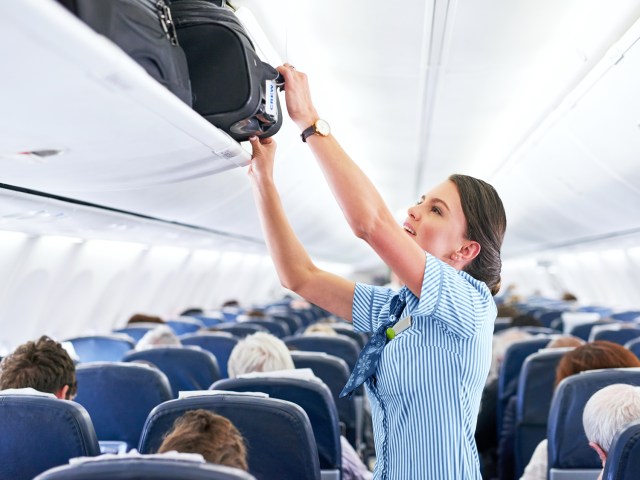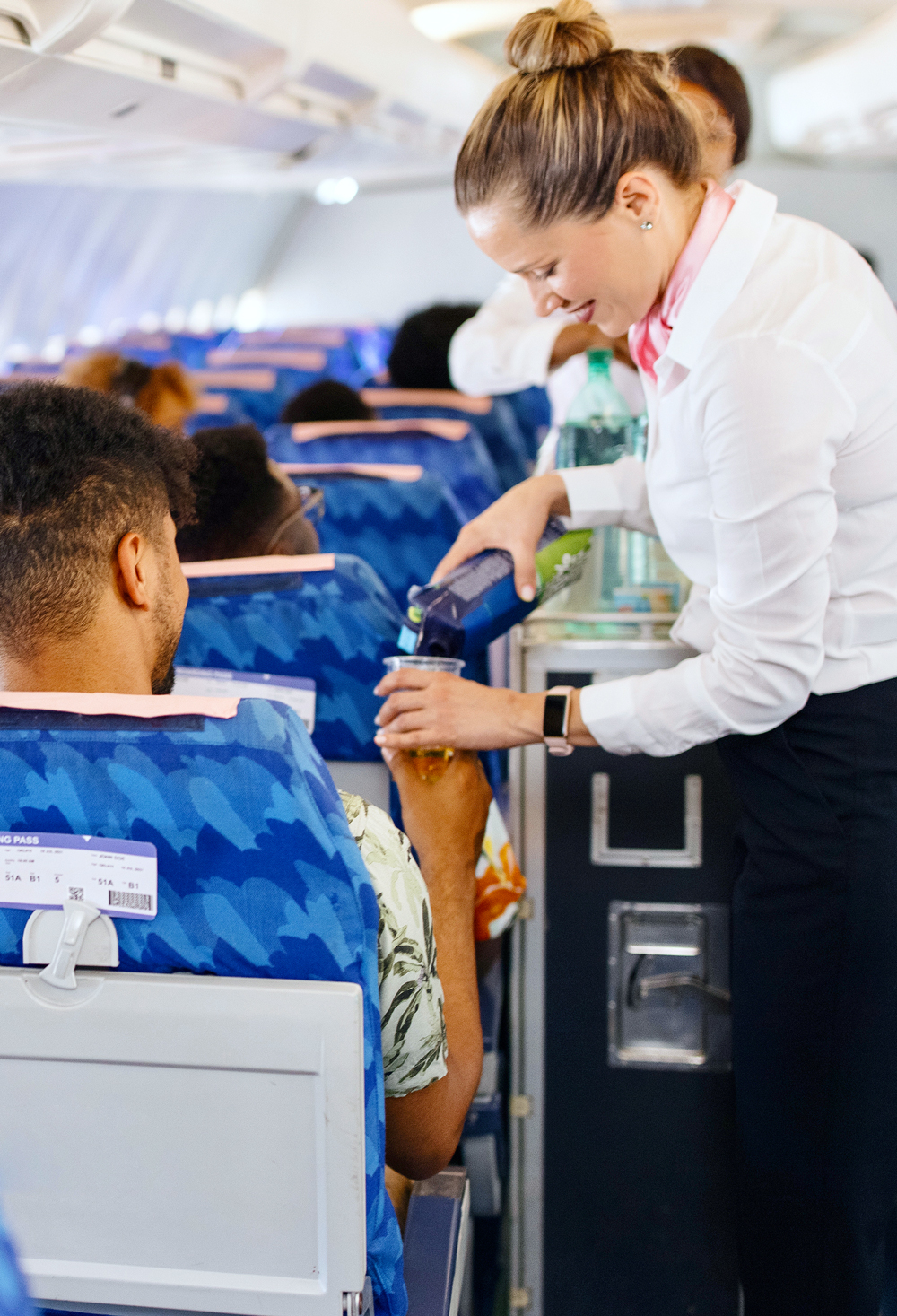You interact with flight attendants every time you get on a plane, but how much do you know about the profession? For most travelers, the answer is probably not much. Before your next trip, read these six fascinating facts about flight attendants to learn more about one of the most interesting jobs around.
They Typically Don’t Get Paid Until the Doors Close

As glamorous as certain jet-setting aspects of being a flight attendant may be, their pay structure is controversial. The majority of flight attendants aren’t officially on the clock until the aircraft doors close, meaning everything that happens before that — closing the overhead compartments, helping passengers to their seats, and preflight activities in the airport — can be considered unpaid labor. This often adds up to several hours a day when cabin crew are technically working off the clock.
This is a long-standing practice among airlines, which argue that flight attendants are compensated for their time on the ground in other ways, such as “minimum pay” arrangements. But as you can imagine, many flight attendants aren’t happy about this pay structure and have pushed for new laws to ensure they’re compensated for all their work, not just what they do once their aircraft is ready for takeoff. In 2022, Delta Air Lines became the first major U.S. carrier to offer boarding pay for flight attendants, which is currently half of their regular hourly rate. In 2024, flight attendants at American Airlines agreed to a new contract that includes a similar provision for boarding pay.
On Long Flights, They Sleep in Shifts in Hidden Bunks

On shorter domestic flights, no one but a few lucky passengers dozing off in their seats will get any sleep. On long-haul journeys between continents, however, there are hidden crew rest compartments where flight attendants (and pilots) can catch a few z’s, as minimum crew rest regulations stipulate. Crew members do so in shifts. These small rooms are usually located above or below the passenger cabin and are off-limits to passengers, with nondescript doors that only crew members will recognize. Flight attendants are required to get at least three hours of rest on journeys lasting 14 hours, and four and a half hours on flights exceeding 18 hours.
There Are Physical Requirements, Including a Minimum and Maximum Height

Most of the requirements for becoming a flight attendant are reasonably straightforward: They have to be at least 18 years of age (21 in some cases), have a valid passport, and be in good overall health. However, if you’re under 5 feet tall or over 6 feet tall, you may have a hard time getting hired. Most airlines have a test to ensure that prospective employees can reach the overhead compartments without trouble, whereas especially tall applicants might have trouble walking through the cabin comfortably. These requirements vary by airline, as do rules regarding facial piercings and visible tattoos.
They Often Stay in Shared Accommodations Called Crash Pads

If a flight attendant doesn’t live in the city where their position is based, which is more common than you might think, they’ll often find themselves far from home the night before a shift. Rather than spend money on a hotel every time this comes up, many will opt for a crash pad instead. These are no-frills, shared accommodations — sometimes in a hotel, sometimes in a private home — typically located a few miles from an airport, where cabin crew and pilots sleep in bunk beds and share expenses. More practical than glamorous, they’ve been compared to hostels for airline personnel. Some are co-ed, while others are only for women, only for pilots, or only for flight attendants.
Flight Attendant Training Takes Several Weeks or Even Months

Though the processes vary by airline, most successful flight attendant applicants will receive a conditional job offer from a major carrier like American Airlines before enrolling in their training program. These programs typically last between three and six weeks, though some private academies take as long as 10 weeks. They cover every aspect of the job: the airline’s specific philosophy, boarding and deboarding processes, dealing with unruly passengers, and every other scenario that can arise at cruising altitude. Only upon successful completion of this training do flight attendants earn their wings and take to the sky.
You Might See Them Sitting on Their Hands During Takeoff

After flight attendants complete their final boarding checks and secure the cabin for takeoff, they pull down what’s known as a jump seat (part of a secret glossary of flight attendant terms). Then, they typically buckle up and sit on their hands. There’s a reason for that: The action is part of the brace position, which also includes placing feet flat on the floor and positioning the head as steady as possible. In the event of an emergency, this ensures that a flight attendant’s body would remain relatively rigid. This also means, should turbulence occur, there’s much less likelihood of the kind of injury that could be caused if their arm were suddenly flung into a bulkhead or seat.
More from our network
Daily Passport is part of Inbox Studio, which publishes content that uplifts, informs, and inspires.























